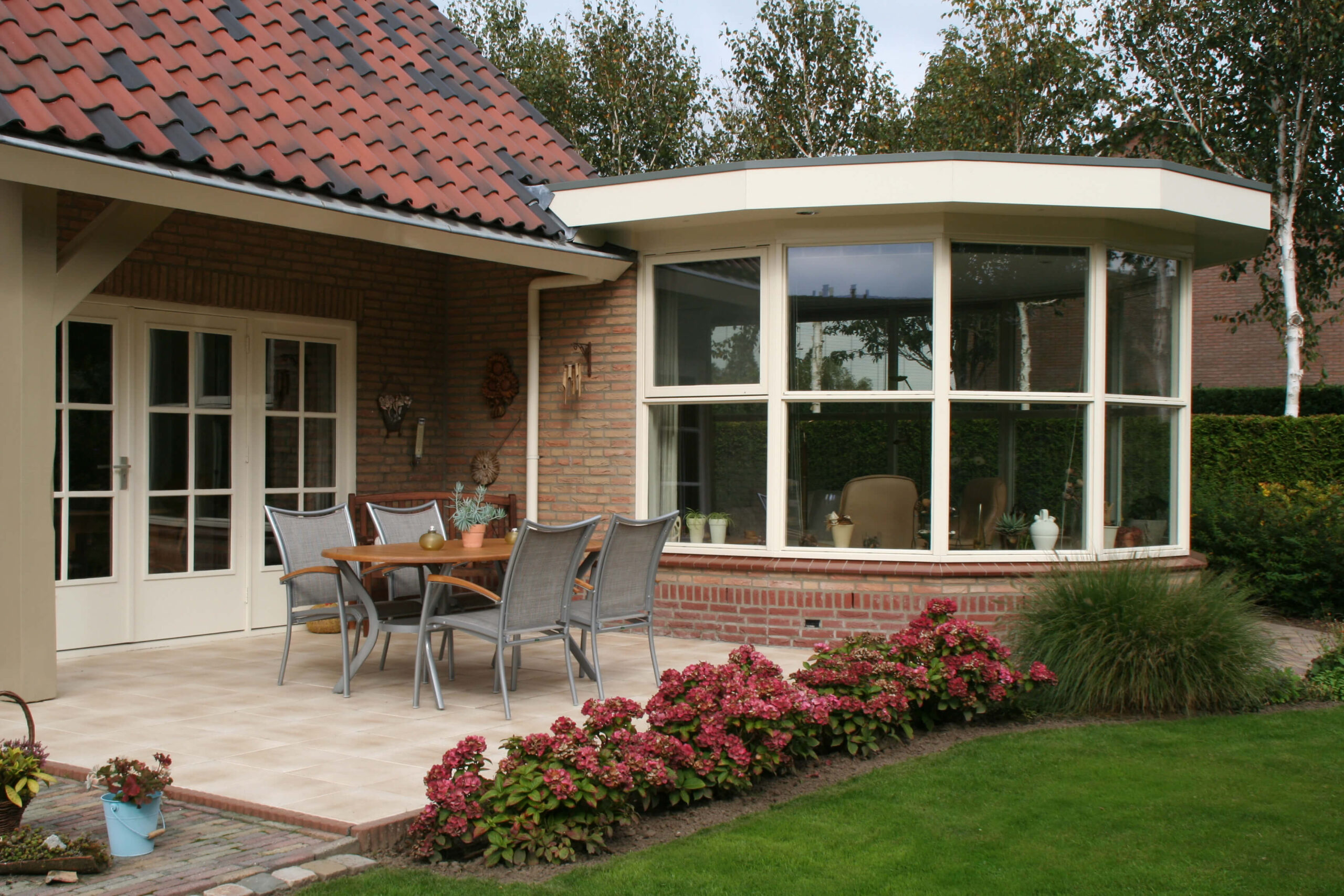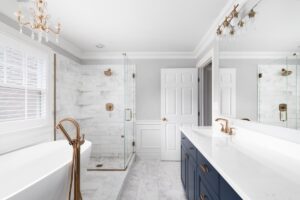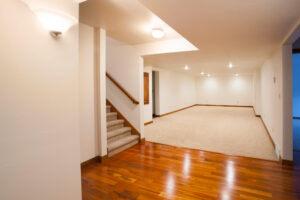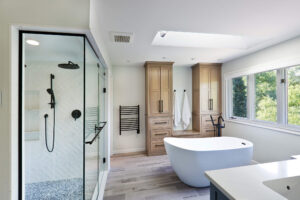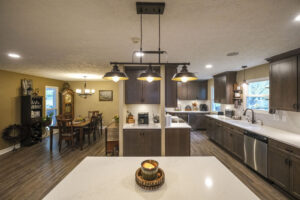Expanding your home is one of the most rewarding projects you can take on. Across Indianapolis and surrounding communities, homeowners are choosing to add square footage rather than relocate, whether that means an extra bedroom, an open kitchen, or a complete second-story addition. However, understanding the difference between a room addition and a home extension can help you plan smarter, budget better, and end up with a home that fits you perfectly.
Here’s a simple way to look at it.
What Is a Room Addition?
A room addition is exactly what it sounds like: you’re adding a brand-new room onto your existing structure. Think of it as building an extra space that didn’t exist before. It could be a bedroom, home office, bathroom, or even a sunroom.
In most cases, a room addition involves expanding outward, increasing your home’s total square footage. You’ll need a new foundation, walls, roofing, electrical, and HVAC connections, essentially, you’re adding a small piece of a new house to the old one.
Common examples of room additions in Indianapolis include:
- Add a bump-out addition to expand your kitchen or dining area.
- Create a new primary suite at the back of the home for privacy and comfort.
- Include a sunroom or enclosed porch for extra relaxation space.
- Convert the garage into a livable room or flexible workspace.
Room additions are ideal for homeowners who need extra space without changing the home’s main layout or structure.
When done right, an experienced contractor makes sure the new space blends naturally with your existing home, from roofline to flooring transitions.
What Is Considered a Home Extension?
A home extension, on the other hand, refers to any project that expands your home’s footprint or structure, not just a single room. It can involve adding several rooms, expanding a level, or even building upward with a second story.
While a room addition is typically smaller in scope, a home extension can completely transform how your home functions and feels.
Some examples include:
- A one-story rear house extension to create an open-concept kitchen and living space
- A two-story extension that adds bedrooms upstairs and a family room below
- Extending your home’s side to include a larger garage or mudroom
- Expanding a basement or crawl space to support more finished square footage
Extending your home often means tackling bigger design changes, added costs, and deeper structural planning. But you also gain more design freedom to reshape your home around your lifestyle.
The Key Difference Between a Room Addition and Home Extension
While both projects aim to add space, the difference between a room addition and a home extension usually comes down to scale, structure, and purpose.
| Comparison Point | Room Addition | Home Extension |
|---|---|---|
| Definition | Adds one new room or small area | Expands multiple areas or the full structure |
| Scope | Smaller in scale | Larger and more complex |
| Foundation Work | Often minimal or limited | May require new foundation or structural reinforcement |
| Permits | Easier and faster to obtain | More extensive review and building permits |
| Design Complexity | Straightforward | More architectural planning required |
| Cost | Lower overall cost per project | Higher cost per square foot |
| Timeframe | Shorter construction period | Longer project timeline |
Both types of projects add livable space and increase your home’s value, but the right choice depends on your goals, budget, and how much change you want to make to your existing layout.
Cost Considerations
When comparing room addition cost vs. home extension cost, think about the size, structure, and finishes you choose. A small room addition, such as a bathroom or home office, typically costs significantly less per square foot than a full-scale home extension that requires major foundation or roofing work.
Permits also vary. You’ll likely need a permit for a room addition, but an extension almost always requires more detailed engineering and inspections.
An experienced home extension contractor in Indianapolis can explain material, labor, and permit costs upfront so you can plan your budget with confidence.
Design and Structural Factors
The biggest challenge when adding space is making sure the new section blends seamlessly with the original home.
A good contractor will match your home’s architectural style, roofline, and finishes so the transition is natural. Whether you’re expanding sideways with a side extension, bumping out the back, or building up, the goal is to keep balance and proportion between the new and existing sections of your home.
Foundation and structural planning are also crucial. Adding a new story, for example, requires a strong existing foundation that can support additional weight. A conversation about a structural extension versus an addition usually happens early in the planning stage to see what’s truly possible.
Depending on your property size, expanding outward with a rear or side addition may be a simpler and more affordable choice than building up. But every home and property in the Indianapolis suburbs, from Carmel to Zionsville, is unique, so the right answer depends on space, zoning, and existing structure.
Choosing Between a Room Addition and a Home Extension
If you’re unsure which option fits your home best, here’s an easy way to decide.
- Do you just need one extra space, like a bedroom or office?
→ Go with a room addition.
- Do you want to expand several areas or change your home’s layout?
→ A home extension could be the better fit.
- Are you planning to stay in your home long-term?
→ A larger extension can add lasting comfort and resale value.
- Do you have limited yard space?
→ Consider building up instead of out.
The best way to decide is to speak with an experienced design-build contractor who can evaluate your home’s structure and goals.
Blending the Old with the New
One of the most rewarding aspects of any addition is seeing it blend seamlessly with your existing space. A skilled remodeling team focuses on blending the new addition with the old structure through matching materials, rooflines, trim, and interior finishes.
Blending old and new spaces takes planning and attention to detail; that’s what makes an extension look intentional instead of added later.
At Gettum Remodeling, we’ve spent decades helping Central Indiana homeowners plan, design, and build beautiful home additions that look and feel original, not added on later.
Thinking About Expanding Your Home?
Whether you’re considering a room addition in Indianapolis or a home extension in Zionsville, you deserve a trusted local partner who understands both the technical details and the personal meaning behind your project.
Our design-build process makes the entire experience smoother, from initial concept through final inspection. We handle everything, from design and engineering to permitting and construction under one roof, ensuring your addition is safe, functional, and beautifully built.
Ready to explore your options? Contact Gettum Remodeling today to schedule a consultation. Our team will help you create a space that fits your family for years to come.
FAQs
What counts as a room addition?
A room addition adds a single new space to your existing home, such as a bedroom, office, or sunroom typically extending the footprint slightly with new walls, roofing, and foundation.
What is considered a home extension?
A home extension involves expanding your home’s overall structure, which could mean adding multiple rooms, another floor, or extending a wall to increase interior space.
Do I need a permit for a room addition or home extension in Indianapolis?
Yes. Both require permits to meet safety and building codes. Your contractor will handle this process to ensure your project complies with all Marion County and local regulations.
Which is more expensive, a room addition or a home extension?
A home extension typically costs more per square foot due to the structural, design, and foundation work involved. A smaller room addition is typically more affordable but still adds long-term value.
How can I ensure my new addition complements my home?
Hire an experienced design-build contractor who focuses on architectural consistency, from exterior materials to interior transitions to create a seamless look.
